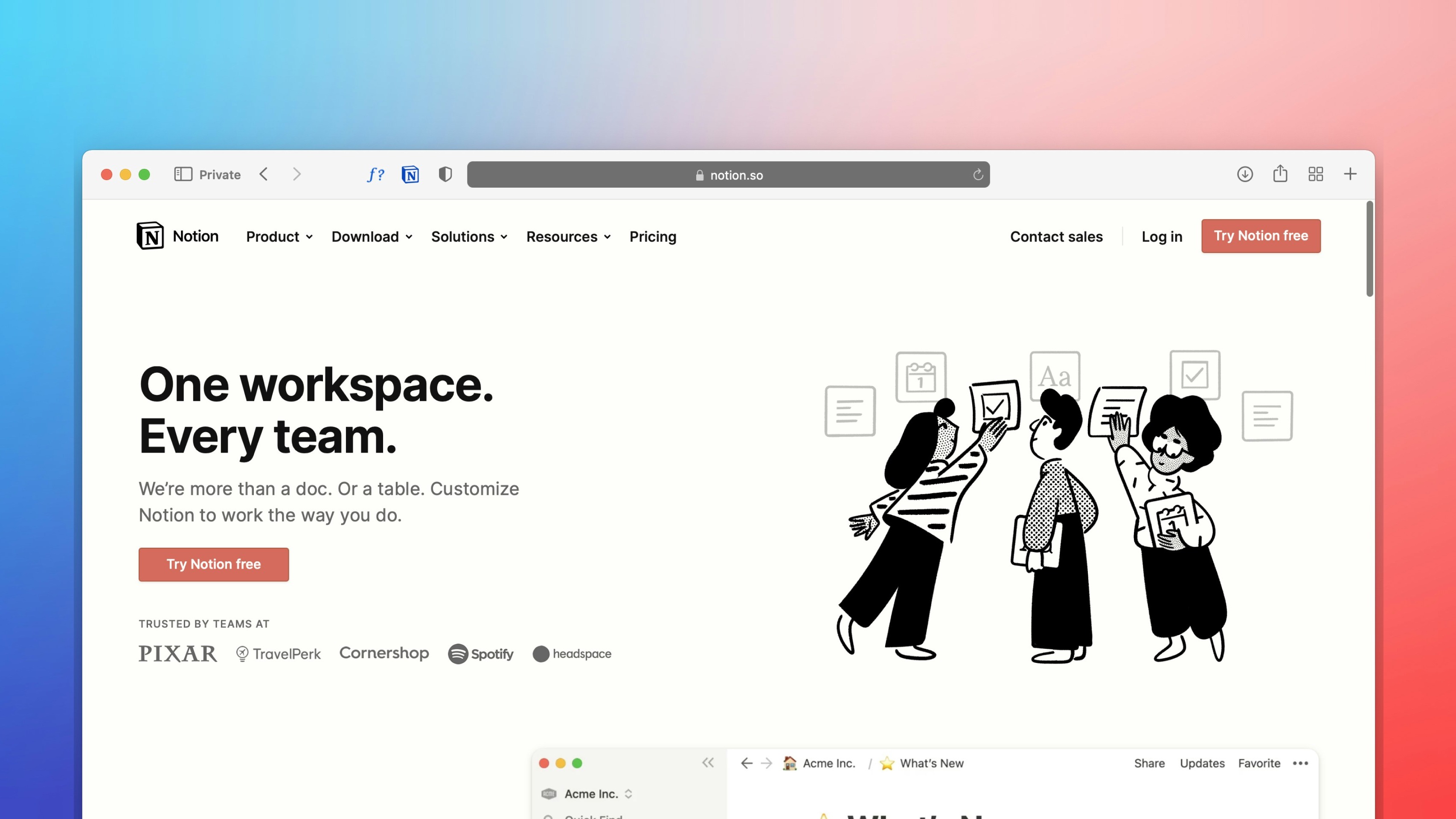 Freelancer tips
Freelancer tips Notion: What It Is, What It’s For, and How to Use It in Your Daily Life
Want to better organize your life and work? Notion can help boost your productivity. Click here to discover what this software is and what it’s used for.



Freedom and flexibility are two characteristics of freelance workers. However, this comes with the responsibility of managing your own projects effectively to achieve success. That's why the key is to design a good schedule. And the best part is that you don't have to do it alone.
Today, we help you create a schedule with 7 simple steps to take your projects to the next level.
It can be defined as a project management tool. Thus, it functions as a useful instrument when planning, organizing, and assigning tasks within a specific timeframe.
This model offers a visual representation of processes, similar to a flowchart. But while the latter focuses on decisions, schedules focus on the sequence and duration of tasks.
In the freelance realm, a schedule can be useful for planning, prioritizing, and even identifying flaws.
More details on what a schedule is used for:
Planning. It helps you plan your projects to work more efficiently and meet the set deadline.
Task Prioritization. It is useful for distinguishing the most urgent and relevant tasks. Consequently, you can focus on what matters and put aside procrastination.
Project Management. With a schedule, you can visualize how your projects are progressing, which tells you if progress is going as planned.
Identification of Potential Problems. If you make a schedule in advance, it is possible that you will detect potential deviations or delays that are still in time to be resolved. But if you want to address and reduce the risks associated with the project, a decision tree diagram might be useful to you.
Just make an organized schedule to achieve results that favor productivity in your freelance work.
There are different types of schedules capable of helping you plan your projects. However, we will focus on some of the most popular:
Gantt Chart. The Gantt chart is a model that facilitates project management by depicting tasks in a chart. The bars it uses are horizontal, and each one represents a specific activity, with its length representing the duration of these tasks.
PERT Chart. It is a diagram focused on the interrelationships between various tasks, allowing for a clearer visualization of complex projects. Its meaning in Spanish is Program Evaluation and Review Technique.
Milestone Schedule. It is a tool that shows the most relevant tasks of a project in a horizontal chart. Each milestone marks the beginning and the end of an important stage or activity in the plan.
Either way, a schedule has the power to transform your way of working; you just have to choose a method and get started.
Whether you want to develop a large or small project, a schedule will simplify the process. That is why we bring you a simple guide to do it:
1. Determine what the project will be. Before you start planning, you must understand the project in its entirety. This means you need to define the objectives, scope, timelines, and any specific requirements. Start with a brief, which will give you an overview to structure the schedule.
2. List the tasks. Make a list of all the tasks necessary to complete the project. From the main tasks to the smallest ones.
3. Calculate the times. Estimate how long each task will take, considering factors such as complexity, resource availability, or other potential setbacks.
4. Identify dependencies. Determine which tasks must be completed first before others can begin. This ensures that project advances are fluid.
5. Create the schedule. Organize the activities in the calendar, assigning start and end dates for each one. You can try online tools, like Miro or Lucidspark, to distribute them equitably.
6. Communicate the schedule. Share the schedule with clients, collaborators, or anyone else involved in the project. This way, you will maintain open communication aligned with the process.
7. Manage and adapt. Monitor the project as it progresses and make adjustments to the schedule as needed. This will allow you to address setbacks, new priorities, or take proactive measures.
We’ve explained how to make a schedule, now try to create one from scratch.
See how these schedule examples fit into different contexts:
1. Training Schedule.

2. Training Program Schedule.

3. Schedule to launch a product or service.

4. Project Schedule.

5. Project Management Schedule.

Choose the model based on how large or small the activities you want to include are.
Given the utility of schedules, the benefits they provide are varied, including:
Optimized Time Management. Allows you to effectively assign tasks and the duration for each one. Thanks to this, you can meet deadlines more consistently.
Less Stress. By planning activities in advance and having a detailed view of your tasks and deadlines, you'll feel less pressure and uncertainty in project management.
Increased Efficiency. Helps identify and prioritize tasks, making you more efficient.
Improved Communication. If you have a schedule, you can share it with your clients and keep them informed. Not only about the ongoing project but also about any changes that arise, showing transparency in your work.
Timely Delivery. This tool will allow you to deliver projects on time, increasing customer satisfaction. As a result, you could earn recommendations and work opportunities in the future.
In short, it is advantageous to use a schedule for your projects to take a step further towards the success and growth of your independent business.
While it can be an excellent tool for project management, schedules have their weak points:
Rigidity. If not designed flexibly, they may not adapt to changes or project requirements.
Demotivation. If you feel you are falling behind what is outlined in the schedule, frustration and demotivation can arise. Consequently, your productivity could be affected.
Lack of Attention to Quality. Focusing too much on meeting the set time could compromise the quality of the delivered work. Something that would affect your reputation as a freelancer in the long run.
Hence, the importance of creating flexible and realistic schedules. It is also necessary to be ready to adjust them according to the development and to maintain a balance between quality and meeting deadlines.
Even so, you can make your schedules work, which will make your projects grow, just like your clientele. DolarApp will always be at your disposal when you need to charge for your services in dollars and save on exchange rates.

The world has borders. Your finances don’t have to.
 Freelancer tips
Freelancer tips Want to better organize your life and work? Notion can help boost your productivity. Click here to discover what this software is and what it’s used for.

 Freelancer tips
Freelancer tips Project chaos? Learn how Trello can help you organize tasks and improve your productivity.

 Freelancer tips
Freelancer tips ClickUp can make any freelancer more productive. Discover what it is, how it works, and the advantages this tool offers you


